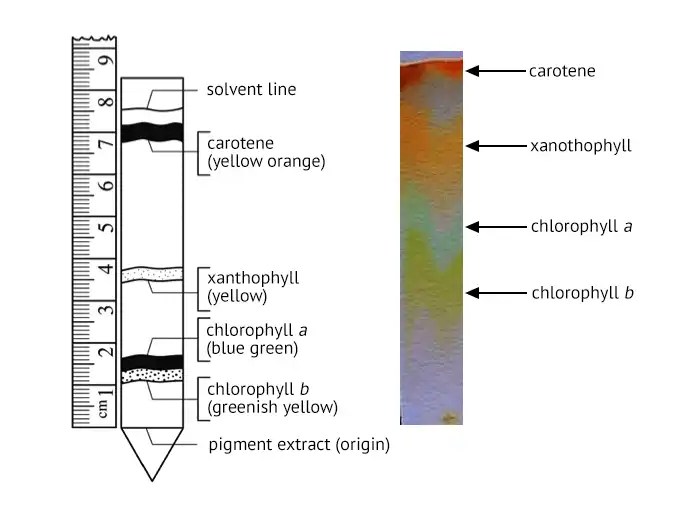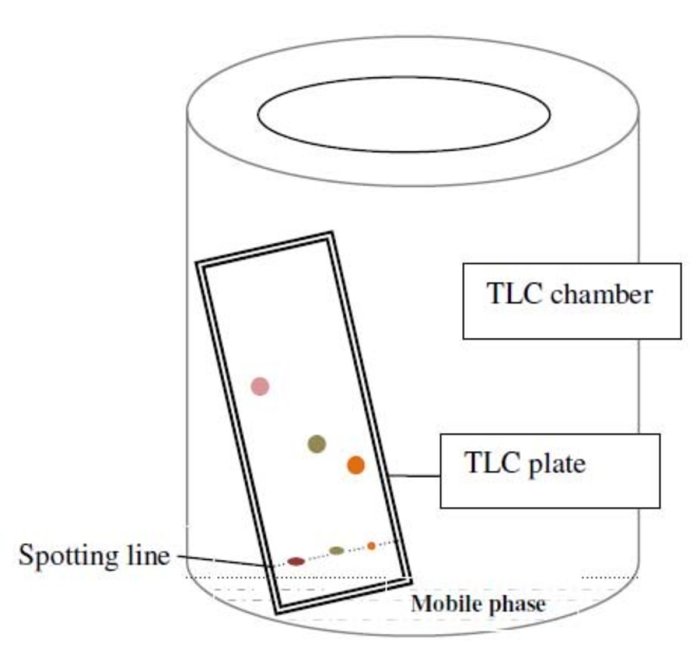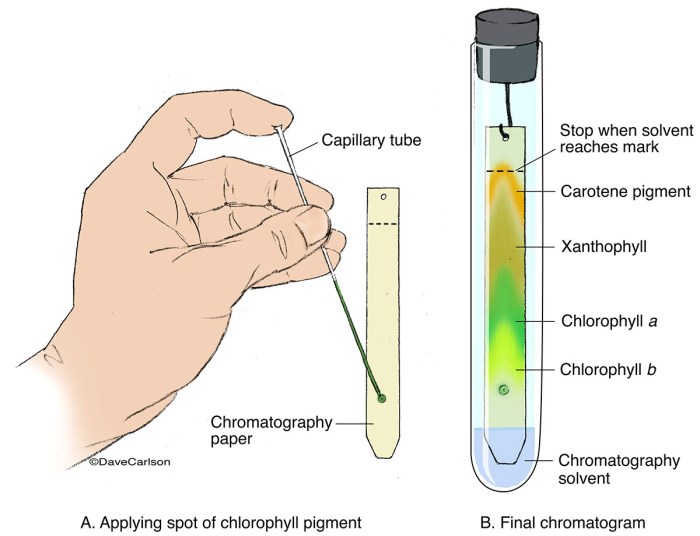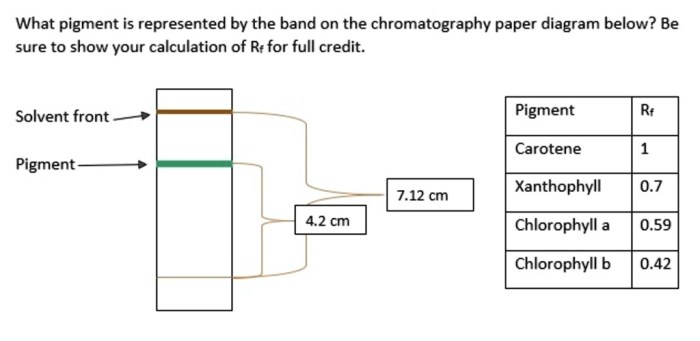Match pigments to bands on chromatography paper – Matching pigments to bands on chromatography paper is a crucial technique used in various fields, including chemistry, forensics, and art conservation. This guide provides a comprehensive overview of the principles, methods, and applications of pigment matching, empowering readers to confidently identify and analyze pigments in complex mixtures.
Chromatography paper, a specialized material composed of cellulose fibers, serves as the foundation for this technique. Pigments, colored substances with distinct chemical structures, are separated based on their varying affinities for the stationary and mobile phases of the chromatography system.
By matching the position of pigment bands on the paper to reference standards, scientists can accurately identify and characterize pigments.
Chromatography Paper

Chromatography paper is a specialized type of paper used in the separation of substances by chromatography. It is composed of cellulose fibers, which are arranged in a uniform and porous matrix. The pores allow for the movement of solvents and solutes through the paper by capillary action.There
are different types of chromatography paper available, each with its own specific characteristics and applications. The most common types include:
- Quantitative chromatography paper:This type of paper is used for quantitative analysis, as it has a uniform thickness and porosity, allowing for accurate measurements of the separated substances.
- Qualitative chromatography paper:This type of paper is used for qualitative analysis, as it has a lower degree of uniformity, allowing for the separation of a wider range of substances.
- Preparative chromatography paper:This type of paper is used for the preparation of pure substances, as it has a high capacity for absorbing and retaining solutes.
Pigments

Pigments are colored substances that are insoluble in water and organic solvents. They are typically composed of organic molecules and are responsible for the color of many natural and synthetic materials.There are different types of pigments, including:
- Natural pigments:These pigments are found in plants, animals, and minerals. Examples include chlorophyll, hemoglobin, and melanin.
- Synthetic pigments:These pigments are produced artificially and are used in a wide range of applications, including paints, inks, and dyes. Examples include azo pigments, phthalocyanine pigments, and quinacridone pigments.
Matching Pigments to Bands: Match Pigments To Bands On Chromatography Paper
Matching pigments to bands on chromatography paper involves comparing the color of the bands with the known colors of different pigments. The process is based on the principle that different pigments have different affinities for different solvents and will therefore move at different rates through the chromatography paper.The
steps involved in matching pigments to bands are as follows:
- Prepare a sample of the unknown pigment.
- Apply the sample to a strip of chromatography paper.
- Develop the chromatography paper using a suitable solvent system.
- Compare the color of the bands with the known colors of different pigments.
- Identify the unknown pigment based on the matching colors.
Applications of Pigment Matching
Pigment matching is used in a variety of applications, including:
- Forensic science:Pigment matching is used to identify unknown substances in forensic investigations, such as blood, fibers, and paint.
- Art conservation:Pigment matching is used to identify and restore the original colors of paintings and other works of art.
- Textile industry:Pigment matching is used to ensure that the colors of textiles match the desired specifications.
Table of Pigments and Their Corresponding Bands

| Pigment | Color | Band (Rf value) | Solvent System |
|---|---|---|---|
| Chlorophyll a | Green | 0.85 | Petroleum ether:acetone (9:1) |
| Chlorophyll b | Green | 0.75 | Petroleum ether:acetone (9:1) |
| Carotene | Orange | 0.95 | Petroleum ether:acetone (9:1) |
| Lycopene | Red | 0.55 | Petroleum ether:acetone (9:1) |
| Anthocyanin | Purple | 0.35 | Water:acetic acid (9:1) |
Troubleshooting Tips

Some common problems encountered when matching pigments to bands include:
- Streaking:This can be caused by using too much sample or by developing the chromatography paper for too long.
- Tailing:This can be caused by using a solvent system that is too strong or by using a paper that is too thick.
- Fading:This can be caused by exposing the chromatography paper to light or heat.
To resolve these problems, try the following:
- Use less sample.
- Develop the chromatography paper for a shorter period of time.
- Use a weaker solvent system.
- Use a thinner paper.
- Protect the chromatography paper from light and heat.
Additional Resources
- Paper Chromatography (Sigma-Aldrich)
- Types of Chromatography (Khan Academy)
- Pigments (ScienceDirect)
FAQ Summary
What are the different types of chromatography paper available?
There are several types of chromatography paper, each with specific properties and applications. Some common types include cellulose paper, ion-exchange paper, and impregnated paper.
How do I choose the right solvent system for pigment matching?
The choice of solvent system depends on the pigments being analyzed. Different solvents have different polarities and can selectively extract and separate specific pigments.
What are the common applications of pigment matching?
Pigment matching is used in various fields, including forensics (identifying inks and dyes), art conservation (authenticating paintings), and pharmaceutical analysis (identifying active ingredients in drugs).